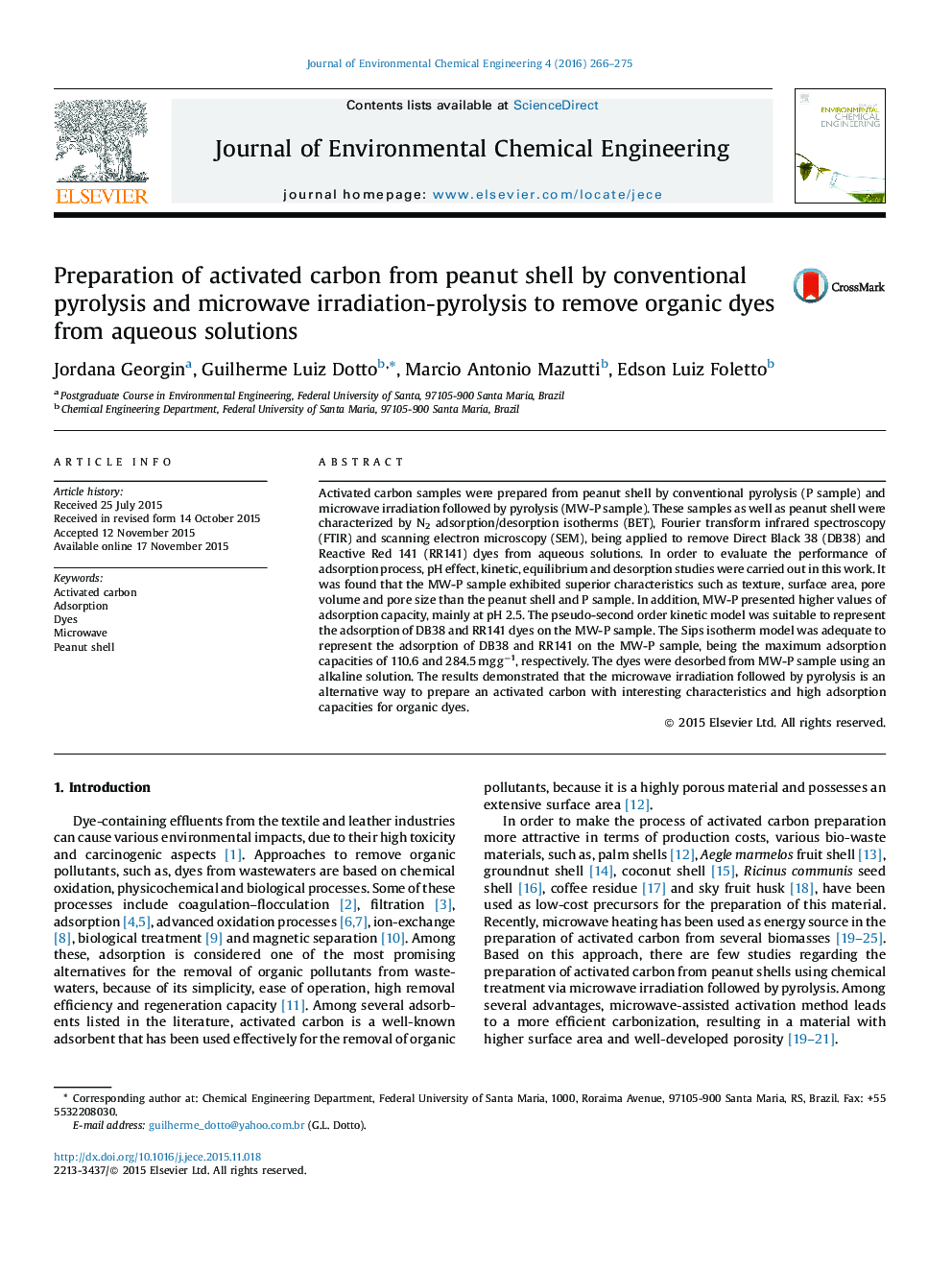| کد مقاله | کد نشریه | سال انتشار | مقاله انگلیسی | نسخه تمام متن |
|---|---|---|---|---|
| 221883 | 464267 | 2016 | 10 صفحه PDF | دانلود رایگان |
Activated carbon samples were prepared from peanut shell by conventional pyrolysis (P sample) and microwave irradiation followed by pyrolysis (MW-P sample). These samples as well as peanut shell were characterized by N2 adsorption/desorption isotherms (BET), Fourier transform infrared spectroscopy (FTIR) and scanning electron microscopy (SEM), being applied to remove Direct Black 38 (DB38) and Reactive Red 141 (RR141) dyes from aqueous solutions. In order to evaluate the performance of adsorption process, pH effect, kinetic, equilibrium and desorption studies were carried out in this work. It was found that the MW-P sample exhibited superior characteristics such as texture, surface area, pore volume and pore size than the peanut shell and P sample. In addition, MW-P presented higher values of adsorption capacity, mainly at pH 2.5. The pseudo-second order kinetic model was suitable to represent the adsorption of DB38 and RR141 dyes on the MW-P sample. The Sips isotherm model was adequate to represent the adsorption of DB38 and RR141 on the MW-P sample, being the maximum adsorption capacities of 110.6 and 284.5 mg g−1, respectively. The dyes were desorbed from MW-P sample using an alkaline solution. The results demonstrated that the microwave irradiation followed by pyrolysis is an alternative way to prepare an activated carbon with interesting characteristics and high adsorption capacities for organic dyes.
Journal: Journal of Environmental Chemical Engineering - Volume 4, Issue 1, March 2016, Pages 266–275
